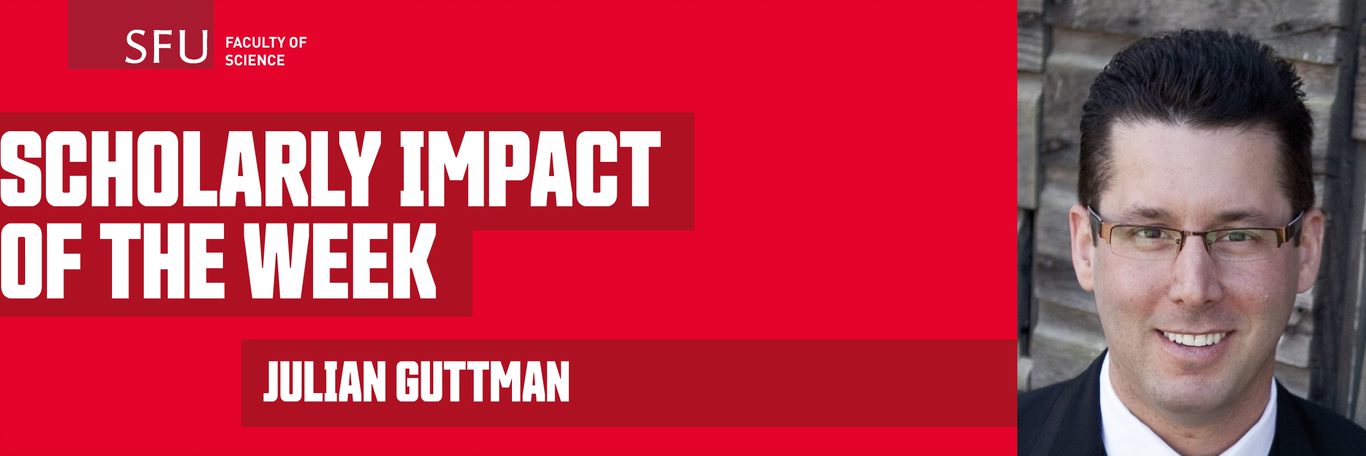
A case of food poisoning cannot just ruin a vacation; for people with comprised immunity, the very young or elderly people, food borne illness and bacterial infections can be quite serious.
Simon Fraser University (SFU) Professor of Cellular Microbiology and Fellow of the American Association for Anatomy Julian Guttman studies bacterial infections such as E. coli, Salmonella, Listeria and others to understand how these microorganisms infiltrate and replicate within human tissue. For his recent study, mDia1 Assembles a Linear F-Actin Coat at Membrane Invaginations To Drive Listeria monocytogenes Cell-to-Cell Spreading he worked with SFU doctoral student Aaron Dhanda and colleagues Fern Ness, Professor A. Wayne Vogl from the University of British Columbia Department of Cellular and Physiological Sciences, and Metello Innocenti from Heidelberg University Biochemistry Center.
The study revealed clues about the molecular mechanisms driving L. monocytogenes, the bacteria that causes listeriosis, how it enters cells within the body and how it spreads between host cells. The findings suggest that disabling the protein MDia1, curbs the spread of Listeria.
We spoke with Professor Guttman about his research.
Can you describe in simplified terms, what you discovered in this study?
One of the major mechanisms that Listeria utilize to propagate within host tissues is called cell-to-cell spreading. During this process, motile intracellular Listeria bacteria move towards the host cell plasma membrane and push against it, resulting in the formation of long slender protrusions that contain the bacteria at their tips. These bacterial-led protrusions protrude directly into neighboring uninfected cells and release the bacteria into what will eventually become newly infected cells. For years, it was thought that the protrusion itself was the sole reason for successful cell-to-cell spreading and disease propagation.
However, we recently discovered that the host cells that come into contact with membrane protrusions form another important structure (a membrane invagination) that sucks the bacteria into the cells. In this study, we further characterized this cell-to-cell spreading event and discovered that linear actin filaments polymerize as a shell closely around the invaginations. Mechanistically, we identified the actin nucleator mDia1 as a key factor whose expression is crucial for the formation of the actin filament shell. Importantly, we prevented the actin shell from forming by using stable mDia1 knockdown cells and found that Listeria cell-to-cell spreading was significantly hampered.
Do these findings suggest possible new treatments for listeria infection? What are you working on now in this area?
This work opens the possibility for therapeutics that target either the Listeria membrane protrusion, and now, also the membrane invagination. If we can prevent either of these structures from forming completely, it is likely that Listeria cell-to-cell spreading will not occur successfully, and in terms of preventing disease propagation, this is vital. My lab has identified several caveolar as well as actin-associated proteins that accumulate at membrane invaginations. What this means is that when a membrane protrusion comes into contact with the surface of a neighboring host cell but just before the membrane invagination begins to form, a signaling cascade is likely occurring that signals caveolin and actin proteins to accumulate. One possibility is that there is a protein exposed on the surface of the membrane protrusions that interacts with a receptor on the surface of the membrane invagination-forming host cell. This interaction could be a trigger for the entire cell-to-cell spreading event.
Does this work translate to other bacterial infections or is it specific to listeria?
This work does indeed translate to other infectious diseases. There are several other potentially fatal human pathogens that rely on cell-to-cell spreading to propagate disease. Shigella flexneri, the causative agent of bacillary dysentery also forms membrane protrusions that allow it to spread from one host cell into another. Interestingly, many viral pathogens, which are often more dangerous than bacteria, also carry out cell-to-cell spreading, thus examining whether or not these pathogens generate similar, yet smaller, actin-based membrane invaginations will be important.
As a microbiologist, you have the opportunity to work on fascinating projects, using the latest science tools and discoveries (e.g. CRISPR, electron microscopy, 3D imaging). What do you find most exciting/interesting about this field?
The availability of new (CRISPR) and old technologies allows our lab to investigate human diseases in many unique ways. With CRISPR, you can create libraries of cells knocked-out for almost any protein. With this, we can identify in a high-throughput manner, potentially hundreds of new host proteins that are hijacked by pathogens such as Listeria, E. coli and others. This, combined with our steadfast imaging modalities (electron microscopy, confocal microscopy, 3D reconstructions and more), will allow my lab to potentially identify as of yet undiscovered pathogen-derived structures that are important for disease progression. At the same time, our discoveries as microbiologists often times reveal potentially new non-canonical functions for some classical eukaryotic proteins that may have implications for all of cell biology.
To view a video of listeria in action, visit Professor Guttman’s faculty web page.
This work was funded through an operating grant from the Natural Sciences and Engineering Research Council of Canada.
SFU's Scholarly Impact of the Week series does not reflect the opinions or viewpoints of the university, but those of the scholars. The timing of articles in the series is chosen weeks or months in advance, based on a published set of criteria. Any correspondence with university or world events at the time of publication is purely coincidental.
For more information, please see SFU's Code of Faculty Ethics and Responsibilities and the statement on academic freedom.